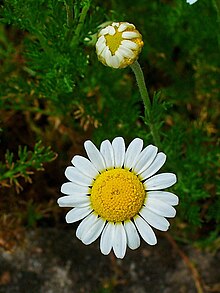Butyric acid n- butyl ester
| Structural formula | ||||||||||||||||
|---|---|---|---|---|---|---|---|---|---|---|---|---|---|---|---|---|

|
||||||||||||||||
| General | ||||||||||||||||
| Surname | Butyric acid n-butyl ester | |||||||||||||||
| other names |
|
|||||||||||||||
| Molecular formula | C 8 H 16 O 2 | |||||||||||||||
| Brief description |
colorless liquid with a fruity odor |
|||||||||||||||
| External identifiers / databases | ||||||||||||||||
|
||||||||||||||||
| properties | ||||||||||||||||
| Molar mass | 144.21 g mol −1 | |||||||||||||||
| Physical state |
liquid |
|||||||||||||||
| density |
0.87 g cm −3 |
|||||||||||||||
| Melting point |
−92 ° C |
|||||||||||||||
| boiling point |
166 ° C |
|||||||||||||||
| Vapor pressure |
4 mbar (20 ° C) |
|||||||||||||||
| solubility |
|
|||||||||||||||
| Refractive index |
1.406 (20 ° C) |
|||||||||||||||
| safety instructions | ||||||||||||||||
|
||||||||||||||||
| Toxicological data |
> 5000 mg kg −1 ( LD 50 , rabbit , transdermal ) |
|||||||||||||||
| As far as possible and customary, SI units are used. Unless otherwise noted, the data given apply to standard conditions . Refractive index: Na-D line , 20 ° C | ||||||||||||||||
Butyric acid n- butyl ester (also butyl butyrate ) is a chemical compound from the group of carboxylic acid esters .
Occurrence
Butyric acid n- butyl ester occurs naturally in the flowers of Roman chamomile .
Extraction and presentation
Butyric acid n -butyl ester can be prepared by reacting butyric acid with n -butanol , or by transesterification of ethyl butyrate in supercritical carbon dioxide are recovered.
properties
Butyric acid n- butyl ester is a volatile, flammable, colorless liquid with a fruity odor that is sparingly soluble in water. The compound dissolves cellulose nitrates , chlorinated rubber , cellulose esters , celluloid and, in addition to natural resins, also metal resinates.
use
Butyric acid n- butyl ester is used as a flavor (smell of pineapple ). The substance is still used as a high boiler in coating materials.
safety instructions
The vapors of butyric acid n- butyl ester can form an explosive mixture with air ( flash point 50 ° C, ignition temperature 454 ° C).
Individual evidence
- ↑ a b c d e f g h i j k Entry on butyl butyrate in the GESTIS substance database of the IFA , accessed on February 1, 2016(JavaScript required) .
- ↑ a b butyl butyrate data sheet (PDF) from Merck , accessed on July 16, 2013.
- ^ A b Richard J. Lewis: Food Additives Handbook . Springer, 1989, ISBN 0-442-20508-2 , pp. 100 ( limited preview in Google Book search).
- ↑ Data sheet Butyl butyrate, natural, ≥98%, FCC, FG from Sigma-Aldrich , accessed on July 16, 2013 ( PDF ).
- ↑ Entry on butyl butyrate in the Classification and Labeling Inventory of the European Chemicals Agency (ECHA), accessed on August 1, 2016. Manufacturers or distributors can expand the harmonized classification and labeling .
- ↑ Eliane Zimmermann: Aromatherapy for nursing and healing professions: course book for training and practice . Georg Thieme Verlag, 2011, ISBN 3-8304-7421-0 , p. 185 ( limited preview in Google Book search).
- ↑ Mahesh N. Varma, Giridhar Madras: Kinetics of synthesis of butyl butyrate by esterification and transesterification in supercritical carbon dioxide. In: Journal of Chemical Technology & Biotechnology. 83, 2008, pp. 1135-1144, doi: 10.1002 / jctb.1897 .
- ↑ a b Entry on butyl butanoate. In: Römpp Online . Georg Thieme Verlag, accessed on January 2, 2019.

